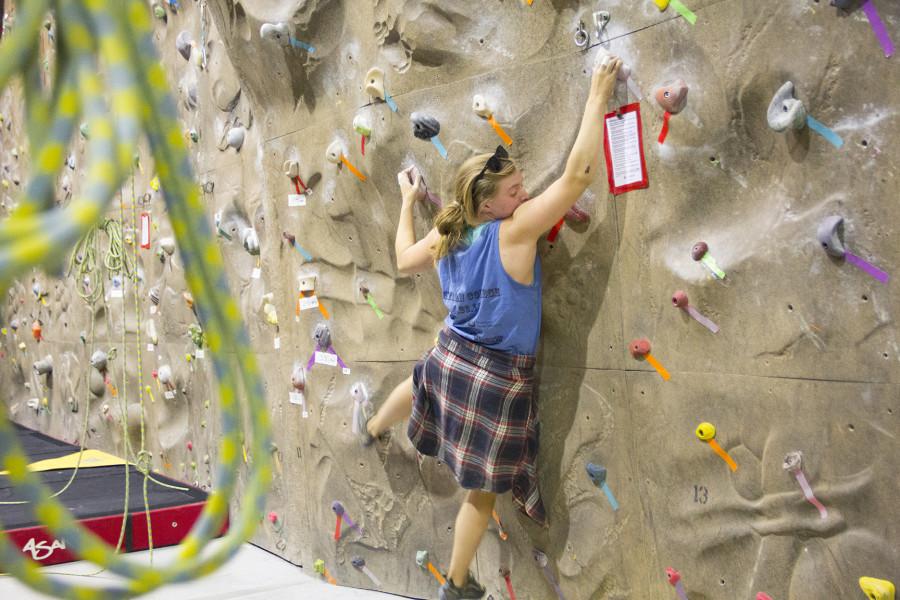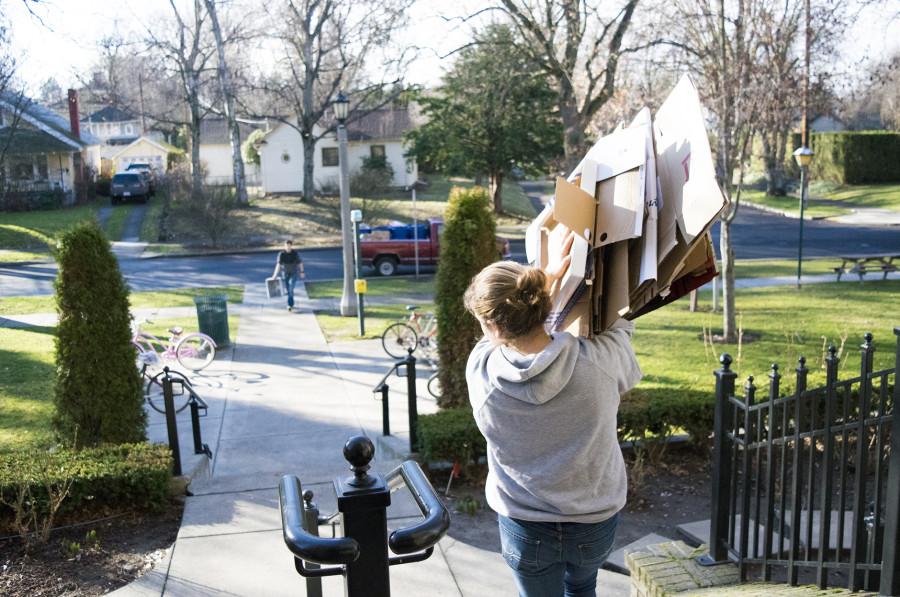Some say it was once a morgue, while others tell tales that someone managed to live there. One thing is for certain: The Catacombs do exist.
The Catacombs are a glorified name for the series of subterranean rooms that connect the basements of Jewett Hall and Lyman House, and are home to a host of storage, boilers and strange items.

In fact, Resident Director Heather Ferguson leads her staff of Jewett resident assistants and student academic advisors through the Catacombs during their training, both to dispel the myths about its existence as well as to expand the students’ knowledge of the residence halls’ layout.
“It’s really a secret, special part of the building,” said Ferguson. “We joke that we put bad students in there.”
That being said, RAs and SAs of Jewett are usually the only students who are privileged with even the slightest look at the underground connection between Jewett and Lyman.
“I got to see the Catacombs at the end of the year. They were exquisite, and they smell like history,” said senior Matt Raymond, a former RA of 3-East.
Raymond was part of one of these groups allowed to take a look at the Catacombs during his time as an RA.
“First you see a bunch of old mattresses that haven’t been used for a while. And then everything gets a little more interesting,” he said.
The Catacombs are also home to various rooms: Bon Appétit storage, with old decorations, posters, cutlery and dishes.
While Ferguson is the only Jewett residence staff member to have keys to the Catacombs, she too is at a loss as to their complete purpose.
“I really have no idea why exactly they are there,” she said.
Maintenance Supervisor Randy Coleman noted that the connection between the residence halls has been around since the two buildings have coexisted.
“It’s been there as long as I can remember,” he said.
The Catacombs seem like a mansion with high-roofed ceilings compared to the other hidden crawlspaces found around campus. One of the more aptly named of these is the “Hobbit Hole,” found in Hunter Conservatory.
Two years ago, Manager of Instructional Media Services Jon Loney and Instructional Multimedia Services Consultant Tristan Rupert came across some difficulty when trying to install the then-new 1080p projector in Kimball Theatre.
“We didn’t have the wires we needed to run to actually go HD from the little floor box,” said Loney. “We were chasing wires, trying to figure out where they go to behind the stage … and then we found this thing that said ‘To Hobbit Hole,’ and we were curious. ‘What is a Hobbit Hole?'”
When the duo contacted a Physical Plant electrician to get more information, it seemed to come as no surprise at all.
“He knew exactly what the Hobbit Hole was. He even got on his radio and said something about needing access to the Hobbit Hole like it’s just part of his whole lingo,” said Loney.
The Hobbit Hole is not necessarily a hole, but rather a tunnel that runs above Kimball and around the skylights.
“Only one person can go down there at a time, but there is enough room that more than one person can be in there,” said Loney.
While he discovered it on his own, it isn’t a frequent destination for Loney, though there are some fringe benefits.
“I haven’t gone in there since, and someone went in there last year because the shades stopped working,” said Loney, while also noting that the glass skylights acted like greenhouses and made the Hobbit Hole very warm.
Coleman and the rest of the physical plant staff discovered and made use of the tunnel themselves during the renovation of Hunter in 1998. It was then that the odd crawlspace earned its moniker.
“Somebody just said, ‘This reminds me of a hobbit hole,'” said Coleman. “It just kind of went around amongst the maintenance staff and we just referred to it as that. When people say ‘the Hobbit Hole,’ we know what they are talking about. It’s not an official name.”
The restricted access to the Hobbit Hole is in part due to safety reasons, but also to restrict roof access through a hatch. While these days the hatch on the Hunter roof remains bolted shut, for a while crafty students who knew of the Hobbit Hole found a way around the lock.
“They jerry-rigged them so that it looked like [the lock] was still mounted on there and then they could just pull [it] off,” said Loney.
For similar reasons, the Catacombs are locked off to students in Jewett and Lyman. Instead of restricting rooftop access, the locked doors keep students from tampering with Bon Appétit equipment. There is no locked door that would keep students from exploring the dining hall kitchen unattended, and the Catacombs also house important equipment for Bon Appétit.
“That’s where they have their refrigeration equipment for their walk-in coolers,” said Coleman. “That’s another reason to keep people locked out, so it doesn’t get turned off.”
There are still crawlspaces in campus buildings that Coleman is not immediately privy to––such as one beneath the stage in Olin Hall 130.
“That one I’d actually never seen. Jon Loney told me about it only last week,” said Coleman.
Loney described that the discovery was happenstance, and his exploration proved that the tunnel was difficult to navigate.
“It doesn’t even look like a person should fit through there, but [Tristan and I] managed to get in there,” said Loney. “There are these weird crannies behind the arch of the stage that a person could go down, but there’s really no way of getting back up.”
For Coleman, the finer details of buildings that might strike students with awe are simply commonplace and part of the job, and really just another part of the school.
“It’s a mystery if you’ve never been there, but if you have been there, it’s just another space,” said Coleman. “The Hobbit Hole sounds special and unique, but all it really is is roof access.”
However, during students’ relatively short times at Whitman, even the most mundane features of the college for some can become subjects of campus mythology.
“It’s the closest thing we have to the secret underground tunnels they have at East Coast schools,” said Raymond.













